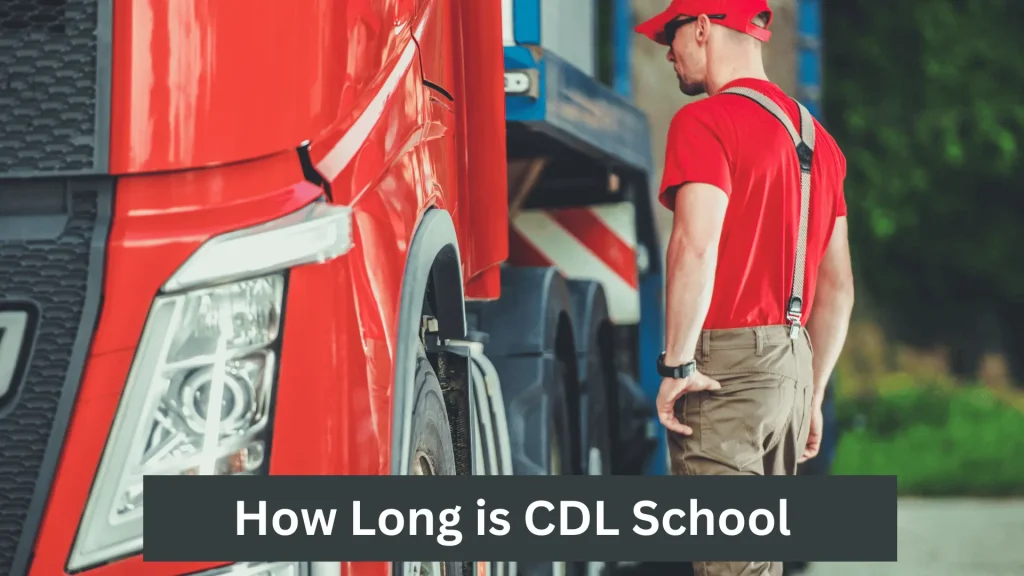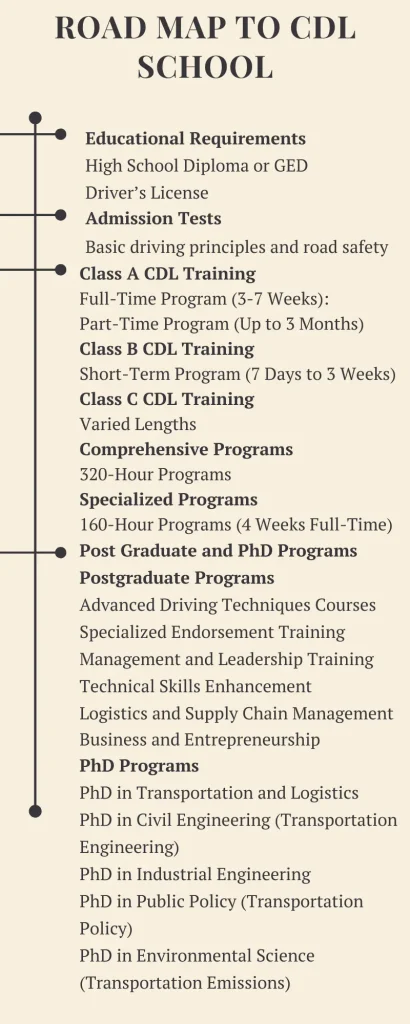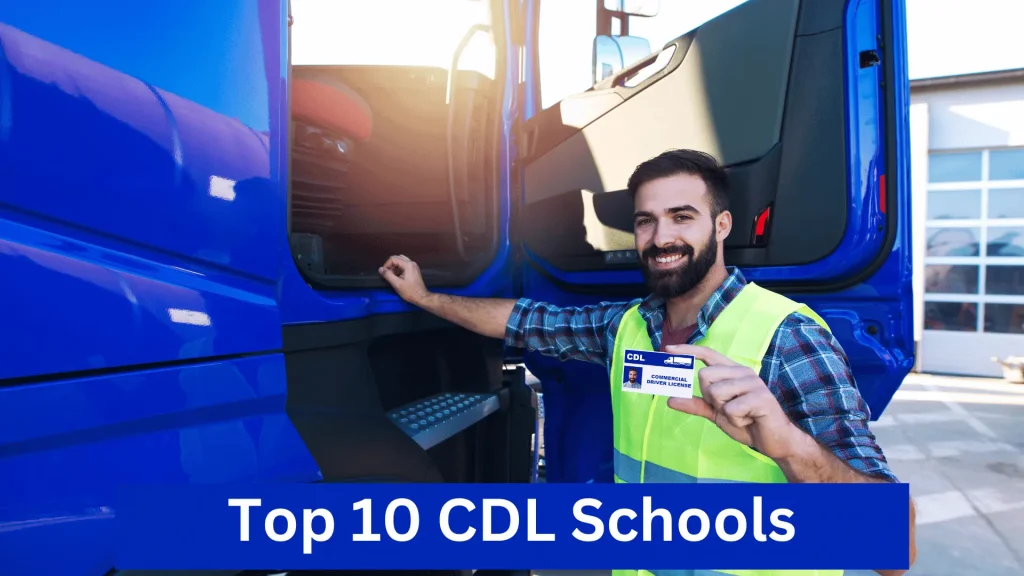How Long is CDL School
If you’re pondering the question “How Long is CDL School?” you’re not alone. Many aspiring truck drivers often wonder about the duration and commitment required to complete CDL training. This article delves into the specifics, offering detailed insights into the lengths of different CDL programs, their components, and what you need to do to get started.
What is CDL School?
A Commercial Driver’s License (CDL) school is an educational institution that offers training programs for individuals aiming to obtain a CDL. This license is necessary for operating large commercial vehicles such as trucks and buses. CDL schools provide both theoretical and hands-on training, including driving skills, safety procedures, and regulatory knowledge.

CDL schools cater to various classes of licenses—Class A, Class B, and Class C—each allowing the operation of different types of commercial vehicles. These programs prepare students for the CDL exam and a career in the trucking industry.
How Long is CDL School?
Class A CDL Training
Full-Time Program (3-7 Weeks):
Class A CDL training, which allows drivers to operate vehicles across state lines, can be completed in as little as 3 to 7 weeks if taken full-time. This intensive program requires a commitment of 40 hours per week, making it a suitable option for those who can dedicate themselves fully.
Part-Time Program (Up to 3 Months):
For those balancing other responsibilities, a part-time Class A CDL program is available. This typically extends the training period to about 3 months, allowing students to manage their time more flexibly while still obtaining the necessary skills.
Class B CDL Training
Short-Term Program (7 Days to 3 Weeks):
Class B CDL training, which is designed for operating heavier vehicles over 26,000 lbs, is generally shorter and less expensive. Students can complete this training in as little as 7 days to 3 weeks. This program is ideal for those seeking a quicker entry into the trucking industry, although it may offer fewer career opportunities compared to Class A.
Class C CDL Training
Varied Lengths:
Class C CDL training is for individuals who wish to drive vehicles carrying more than 16 passengers, such as buses. The duration of this training varies significantly depending on the school and state regulations. Additional endorsements, such as for school buses, may also be required, potentially extending the training time.
Comprehensive Programs
320-Hour Programs:
Some CDL schools, such as the one mentioned in Illinois, offer comprehensive programs that include 320 hours of education. This encompasses both online courses and hands-on training in areas like map reading, trip planning, and defensive driving. These programs are designed to provide a thorough grounding in all aspects of commercial driving.
Specialized Programs
160-Hour Programs (4 Weeks Full-Time):
Certain schools, like Jefferson’s CDL training program, offer a 160-hour course that spans about 4 weeks of full-time training. This includes 40 hours of classroom instruction and 120 hours of practical, on-the-road training. This program meets all entry-level driver training requirements set by the FMCSA as of February 2022.

How to Enter CDL School
Educational Requirements
To enroll in a CDL school, applicants typically need to meet the following criteria:
Age: Minimum age of 18 years for intrastate driving; 21 years for interstate and hazardous materials transport.
Driver’s License: A valid driver’s license at the time of registration.
Physical Requirements: Meet the Federal DOT physical requirements, including a drug screen.
Application Process
CDL Program Application: First, complete the application form specific to the CDL program you are interested in. This can usually be done online through the school’s website.
Documentation: Provide necessary documentation, such as proof of age, a valid driver’s license, and medical certificates.
Permit: Attempt to obtain a learner’s permit before starting the classes, as this is often a prerequisite.
Entry Tests
Some schools may require applicants to pass an entry test to demonstrate their knowledge of basic driving principles and road safety. This ensures that students have a foundational understanding before embarking on more advanced training.
Financial Aid
Several financial aid options are available for CDL training:
Tuition Fees: Tuition for CDL programs can vary, with some schools charging around $5,000, excluding additional fees for permits and testing.
Sponsorships: Many trucking companies offer sponsorships, covering part or all of the tuition in exchange for a commitment to work for them after graduation.
Veterans’ Benefits: Veterans can often use their benefits to cover the cost of CDL training.
Scholarships: Programs like the Work Ready Scholarship may cover a portion of the tuition, with students responsible for the remaining balance.
Postgraduate and PhD Programs
Postgraduate Programs for CDL School
While traditional postgraduate programs like Master’s or Doctorate degrees don’t typically apply to Commercial Driver’s License (CDL) training, there are several advanced and specialized training programs that can be considered “postgraduate” in nature within the realm of commercial driving. These programs are designed for those who already have a CDL and are looking to enhance their skills, specialize in a specific area, or pursue advanced certifications. Here are some of the options:
Advanced Driving Techniques Courses
Defensive Driving: Programs focusing on defensive driving techniques for professional truck drivers.
Hazardous Materials (HAZMAT): Training for handling and transporting hazardous materials safely.
Winter Driving: Specialized training for driving in severe winter conditions.
Specialized Endorsement Training
Tankers: Training for drivers looking to specialize in transporting liquids in tanker trucks.
Doubles/Triples: Courses for driving combination vehicles with multiple trailers.
Passenger Transport: Programs for those interested in driving buses or other passenger vehicles.
Management and Leadership Training
Fleet Management: Courses on managing a fleet of vehicles, including logistics, maintenance, and driver management.
Safety and Compliance: Training on regulatory compliance, safety protocols, and managing compliance-related issues.
Technical Skills Enhancement
Mechanical Knowledge: Advanced courses on truck maintenance and repair.
Technology Integration: Training on the latest technologies used in the trucking industry, such as electronic logging devices (ELDs), GPS systems, and automated trucking technologies.
Logistics and Supply Chain Management
Supply Chain Courses: Advanced education on the broader logistics and supply chain management to understand the industry context better.
Warehouse Management: Training on managing warehouse operations and integrating with transportation logistics.
Business and Entrepreneurship
Owner-Operator Programs: Training for those who want to become independent contractors or start their own trucking business.
Financial Management: Courses on financial planning, budgeting, and managing expenses for truck drivers.
PhD Programs
PhD in Transportation and Logistics
Focus Areas: This program delves into the complexities of transportation systems, logistics, supply chain management, and infrastructure planning.
Research Topics: Freight transportation efficiency, supply chain optimization, transportation policy, and sustainable logistics.
PhD in Civil Engineering (Transportation Engineering)
Focus Areas: Specialization in transportation engineering within the broader field of civil engineering.
Research Topics: Highway design, traffic flow analysis, transportation safety, and infrastructure resilience.
PhD in Industrial Engineering
Focus Areas: This program often includes specializations in operations research, supply chain management, and logistics.
Research Topics: Optimization of logistics networks, warehouse management, transportation systems analysis, and industrial operations.
PhD in Public Policy (Transportation Policy)
Focus Areas: Examination of public policies affecting transportation systems, regulatory frameworks, and economic impacts.
Research Topics: Transportation policy analysis, regulatory impacts on trucking, safety standards, and economic effects of transportation policies.
PhD in Environmental Science (Transportation Emissions)
Focus Areas: Study of environmental impacts of transportation, focusing on reducing emissions and promoting sustainable practices.
Research Topics: Air quality, emissions reduction technologies, sustainable transportation practices, and environmental policy.
PhD in Technology and Innovation Management
Focus Areas: Innovation in transportation technologies, including advancements in trucking technology and logistics systems.
Research Topics: Autonomous trucking, smart logistics systems, transportation technology integration, and innovation management.
Top 10 CDL Schools

Roadmaster Drivers School
Offers comprehensive Class A CDL training programs.
Swift Academy
Provides training for Class A CDL with a focus on on-the-job training.
HDS Truck Driving Institute
Known for its extensive hands-on training.
CR England Premier Truck Driving School
Provides training with job placement assistance.
Schneider Truck Driving School
Offers both Class A and Class B CDL training programs.
Southern State Community College
Offers a variety of CDL programs with flexible schedules.
Midwest Technical Institute
Provides comprehensive training with CDL certification.
TDI Truck Driving Institute
Known for quick and effective training programs.
GDA Driver Training
Offers Class A and Class B training, including endorsements.
160 Driving Academy
Provides thorough training with a focus on safety and compliance 1.
Factors Affecting the Length of CDL School
Type of CDL: Class A, B, or C licenses have different training requirements.
Program Structure: Full-time vs. part-time programs.
State Regulations: Varying requirements can affect the training duration.
Personal Schedule: Students’ availability can shorten or extend the program.
Additional Endorsements: Obtaining extra qualifications like Hazmat or Tanker can lengthen training.
School Curriculum: Some schools offer more comprehensive training programs, impacting length.
Final Verdict
The duration of CDL school varies based on several factors, including the type of license, program structure, and additional endorsements. To answer the question “How Long is CDL School?” it can range from a few weeks to several months. Understanding these variables will help you choose the right program that fits your career goals and personal schedule.
FAQs
1.What is the shortest duration for CDL training?
Some Class B programs can be completed in as little as 7 days.
2.Can I get financial aid for CDL training?
Yes, there are various financial aid options, including sponsorships, veterans’ benefits, and scholarships.
3.What are the age requirements for CDL training?
The minimum age is 18 for intrastate driving and 21 for interstate driving and hazardous materials.
4.Do I need a high school diploma to enroll in CDL school?
While not always required, having a high school diploma or GED can be beneficial and sometimes necessary.
5.What additional endorsements can I pursue with my CDL?
You can pursue endorsements such as Hazmat, Double/Triple Trailer, and Tanker, which may require additional training
